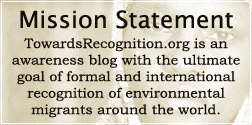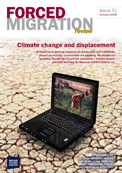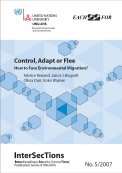“A complex range of often inter-related factors – including the environment and nature, conflict, and the international political economy – contribute to creating the imperatives and incentives for people to leave their countries and cross international borders”, writes Alexander Betts in *. All of these push factors, he argues, might not necessarily guarantee protective status for what he calls “distress migrants” within the traditional 1951 Refugee Convention.
According to Betts, three broad categories of people stand out as “distress migrants” with unfulfilled protection needs: 1) People who may be considered as “neither/nor” groups, who flee desperate economic and social distress, resulting, for example, from state collapse; 2) People who flee sudden natural disasters such as tsunamis, earthquakes, and flooding; and 3) People who are displaced by slow-onset causes related to environmental degradation or the consequences of climate change. In short, those migrants this blog advocates for.
Although he admits there are gaps in current protection law, he believes that there is no need for the creation of new, binding norms to address them since broad norms already exist.
The international community just needs to a) find an authoritative consensus on the application of current instruments to the situation of vulnerable migrants and b) create a clear division of responsibility between international organizations for the operational implementation of such guidelines.
He suggests that we use a soft law framework like that created for internally displaced persons towards a possible “Guiding Principles on the Protection of Vulnerable Irregular Migrants.” The non-binding nature of soft law is particularly attractive, he argues, because so few powerful states are predisposed to the negotiation of binding, multilateral norms through the UN framework, especially in the touchy area of migration (as
seen in the limited number of signatories of the UN Treaty on the Rights of Migrant Workers).
While Betts believes that “UNHCR would not take on institutional responsibility for the protection of vulnerable migrants, which would be outside of its normative and operational mandate”, it could, however, play a facilitative role by designing and overseeing the soft law framework process. This would fit nicely with the idea of a “collaborative approach” of dividing responsibility among international organizations like the International Federation of the Red Cross, OHCHR, IOM, and a range of NGOs.
*Recently republished in the International Journal of Refugee Law, Vol. 22, No. 2, July 2010 p. 209-236.
Post by Kayly Ober



